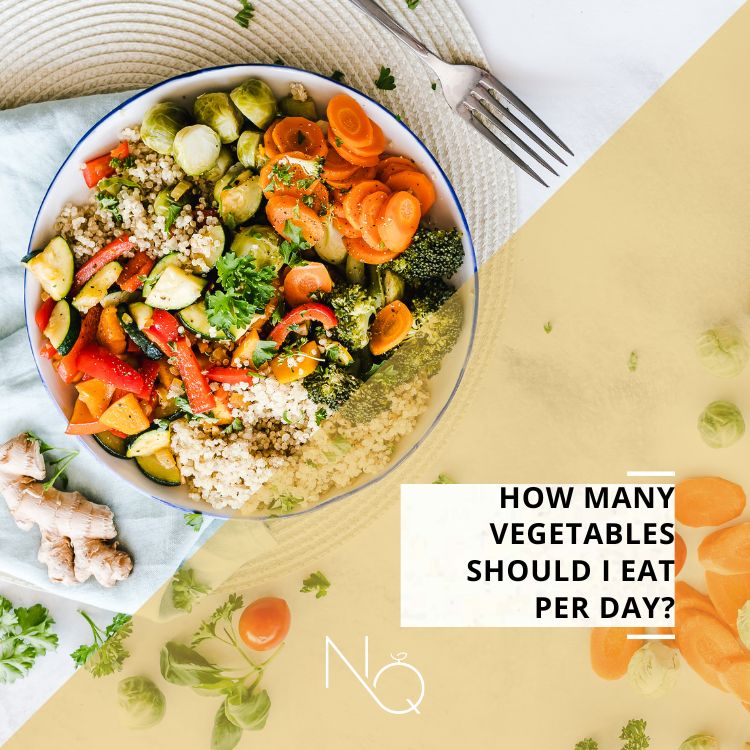When it comes to our daily diet, understanding the optimal intake of various food groups, including vegetables, is crucial. Often, vegetables are overlooked or misunderstood, leaving us with questions about their role and importance. How much should we consume daily to align with the National Dietary Guidelines and promote good health? If we're not accustomed to including vegetables in our meals, how can we incorporate them effectively? Delve into the following sections for comprehensive answers to these inquiries.
Understanding the Vegetable Food Group
The vegetable food group occupies a fundamental place within the dietary framework and holds a prominent position on the Mediterranean Pyramid. It's imperative that we incorporate vegetables into our daily meals, distributing them across various eating occasions. This food group provides our bodies with vital components, including fiber, fluids (water), water-soluble vitamins like E, C, and K, trace elements, some minerals, and a modest carbohydrate content. Moreover, vegetables are a rich source of compounds boasting antioxidant, anticancer, and antiaging properties. This multifaceted composition renders vegetables not only a cornerstone of health preservation but also a means to achieve satisfying meals.
Inclusion of Vegetables
Which foods fall under the umbrella of vegetables? Here's a concise overview presented in portion sizes, where each specified quantity constitutes one serving. Generally, a serving equates to 150-200g of either cooked or raw vegetables.
One serving of vegetables equals:
- 1 cup (240 mL) of cooked or chopped raw vegetables (e.g., pumpkin, eggplant, peppers, broccoli, etc.)
- 2 cups (240 mL) of raw green leafy vegetables (e.g., lettuce, arugula, spinach, etc.)
- 2 medium-sized carrots
- 1 medium-sized cucumber
- 1 large tomato or 1 cup (240 mL) of grated tomato or 1 cup (240 mL) of cherry tomatoes
Recommended Daily Intake
For optimal health benefits, it's advisable to incorporate a minimum of 4 servings of diverse vegetables into our daily diet, whether consumed raw or prepared through cooking. This guideline applies universally to men, women, pregnant and lactating individuals, as well as teenagers aged 14-18.
Exclusions from the Vegetable Group
While potatoes are not classified within the vegetable group, some other items like corn, peas, green beans, and kidney beans are categorized as starchy vegetables due to their higher carbohydrate content compared to other vegetables. Furthermore, olives and avocados, while nutritious, are not part of this group due to their higher fat content, placing them within the fats category. Although tomatoes, with a slightly elevated sugar percentage, are not inherently fattening, they belong to the vegetable group. Beets and pumpkin also fall into this category.
Practical Tips for Incorporating Vegetables
Here are valuable insights to help boost your vegetable consumption within your daily routine:
- Inclusive Main Meals: Infuse vegetables into every major meal. Craft salads to accompany dishes, incorporate pan-fried vegetables into pasta, opt for light dinners featuring roasted vegetables, nuts, and cheese, create flavorful vegetable-based dips such as eggplant salad, and embrace boiled greens like Swiss chard, radishes, collards, stamnagathi, and slider for effortless salad variations.
- Embrace Diversity: Endeavor to consume a wide array of vegetables daily, varying in colors. Each vegetable type offers unique beneficial substances. Enhance salads by combining cucumber, tomato, pepper, and adding kritamo and capers for added richness.
- Opt for Traditional Preparations: Include traditional dishes rich in vegetables, like imam eggplants, briam, turlou, stuffed vegetables “gemista”, cabbage rice, and spinach rice. These dishes encompass a medley of vegetables, thereby delivering multiple advantages.
- Raw Consumption: Incorporate raw vegetables whenever possible, as cooking can cause nutrient loss.
- Seasonal Selections: Prioritize seasonal vegetables, as they tend to be more flavorful and nutritious.
- Explore Frozen and Canned Options: Alongside fresh vegetables, consider frozen or canned varieties for convenience. You can freeze vegetables for later use or opt for pickled versions.
- Delectable Preparations: Transform vegetables into delightful dishes, such as vegetable soups (e.g., pumpkin soup, gazpacho, vegetable and barley soup, summer tomato soup) or pies like vegetable pie, cod-infused pumpkin pie, and leek pie.
- Personal Vegetable Garden: For the adventurous and enthusiastic, cultivating a personal vegetable garden or potted plants can provide a rewarding source of homegrown produce. This practice aligns with the ethos of the traditional Mediterranean Diet, rooted in backyard harvests.
In essence, grasping the significance of vegetables in your daily diet empowers you to make informed choices that contribute to your overall well-being. By implementing these insights, you can seamlessly integrate vegetables into your culinary journey, enhancing both your health and gastronomic experiences.




